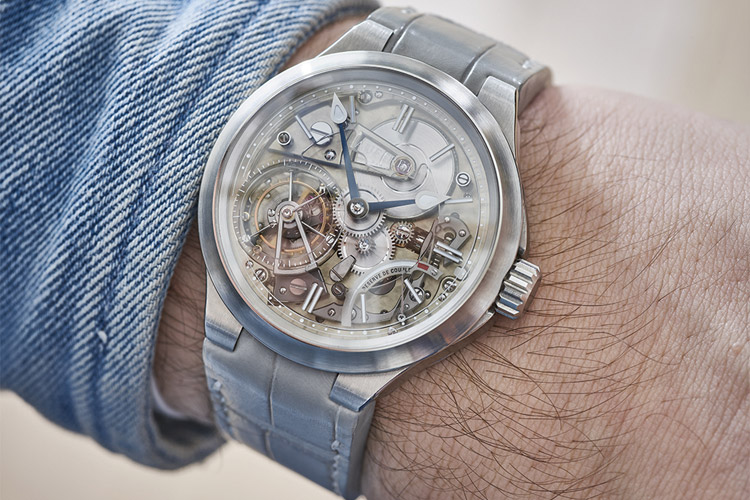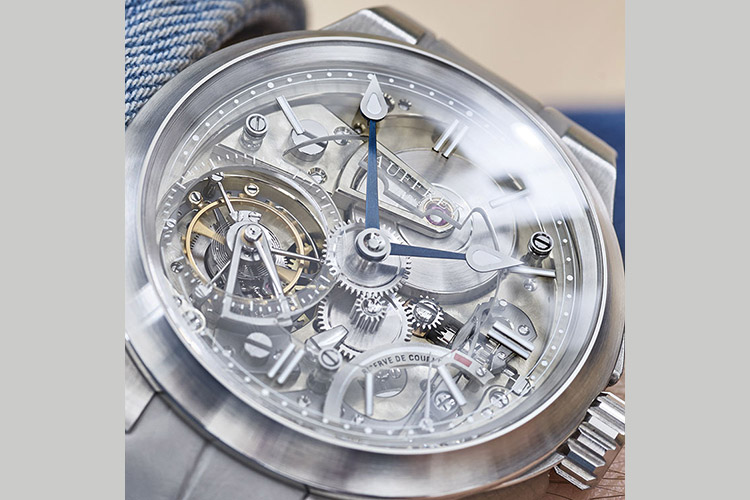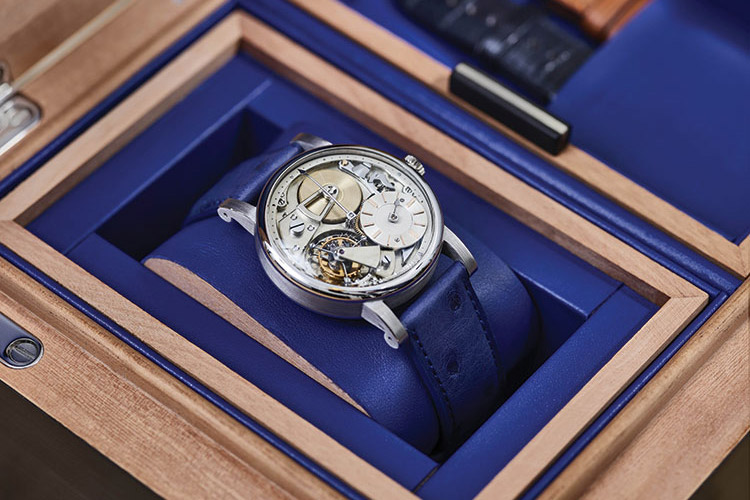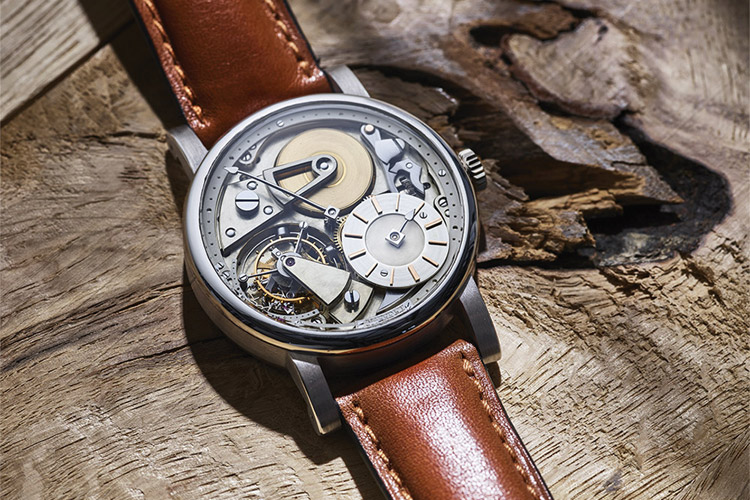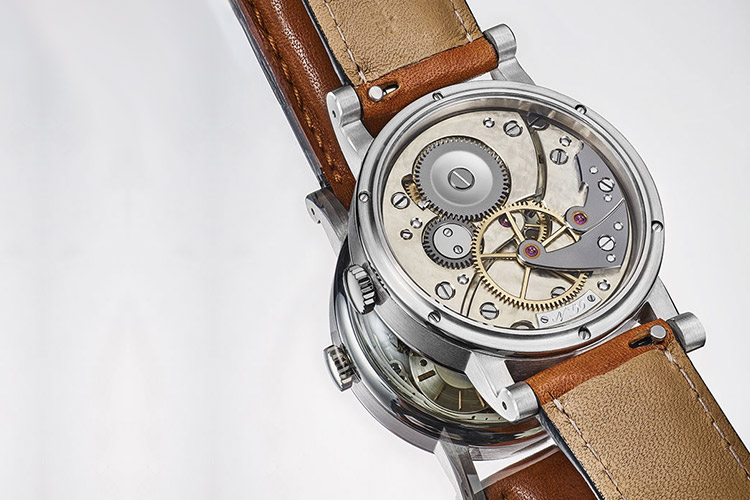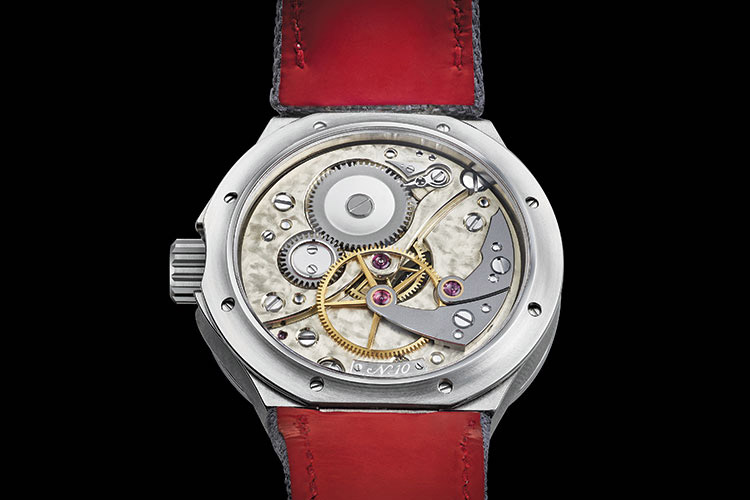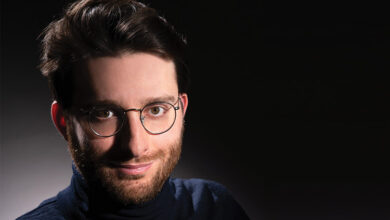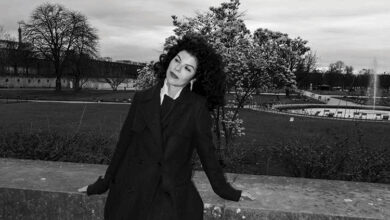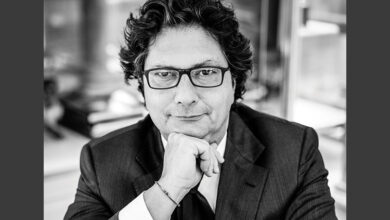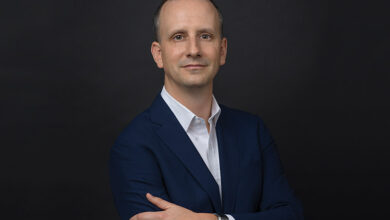
In this ongoing series featured every month, “Day & Night” focuses on individuals who have impacted the world of haute horlogerie positively… The world of haute horlogerie is used to big brands creating waves each year with their stunning complications, but when it is a young watchmaker making the news almost every year, especially given the current challenging times, it is indeed remarkable. Théo Auffret is the 27-year-old watchmaker creating tourbillons in Paris
Théo Auffret first came to the notice of horological aficionados when he won the F.P.Journe’s Young Talent Competition in 2018 for his regulator chronometer Tourbillon à Paris, followed soon after by a GPHG nomination in 2020 and 2021. “Day & Night” sat down with Théo to figure out the influences and choices that have shaped the man and watchmaker.
PARIS: BIRTHPLACE, A LIFELONG LOVE AND DISCOVERING WATCHMAKING
Théo Auffret was born in 1995 in the town of Poissy on the outskirts of Paris, around 20-25 kms from Paris city centre. He describes himself as a “Countryside boy, I grew up in the countryside and went to school there.” Théo was slated to become an engineer because “I was passionate about cars and planes, especially airplanes; I still make scale models of planes.” Though Théo was quite good at school he was (fortunately for the world of horology) not good enough to make it to the famous engineering schools in Paris.
Théo took his first step into the world of horology when he met a watch repairer, nearing retirement, close to his hometown. “I took a lot of interest in his boutique and workshop. When I first asked him if I could spend a few days in his workshop to learn, he refused because he didn’t have the time to teach me.” But Théo persisted in asking him and he finally got his break when Théo’s father bought a watch from his shop. “It was difficult then for him to refuse me. Initially, I was just curious about this shop and workshop. When he finally agreed, I was supposed to go in for a few days to learn, but I never left.”
“Watchmaking is engineering – micro engineering but there is also an element of art in watchmaking. Initially, I was interested in repairing as I didn’t know how to make a watch. I used to spend all of Wednesdays, Sundays, and holidays with him. He became a kind of grandfather to me, and I am still in contact with him, though he is retired now.”
Théo and his mentor mostly worked on repairing classic watches – watches, clocks, common watches that people would bring in to be repaired. That was his first brush with mechanical watchmaking. “Paris and France have a huge history in watchmaking and clocks and so you will find a lot of important clocks, watches, and collections in the apartments and residences of important families, in public buildings – very nice pieces, in fact.”
MORTEAU: WATCHMAKING SCHOOL AND INTERNING
Théo was in school at that time and finally decided to study watchmaking. “I was accepted at the Lycée Edgar Faure in Morteau, which is near the Swiss border. I wanted to study there, but also work in a related field as I was slightly older than the other students; by then, I had already completed my baccalaureate and was around 17-18. In a lycée, students typically start earlier, around 15-16.”
Théo’s first choice for a formal internship was with his mentor who repaired watches. “I first asked him if he would take me as an apprentice. He could not do that due to some issues, but he sent me to another workshop in Paris to ask for an apprenticeship. That is how I started my official apprenticeship at a restoration shop in Paris; this was with Denis Corpechot where I worked for two years.”
Théo was restoring clocks most of the time, but he also started to work on watches because Denis saw that Théo liked working with watches and they had a few collectors and customers bring in pocket watches. “At that time, it was very interesting for me to work with pocket watches from the end of the 18th century to the end of the 19th century. That became my favourite time period in watchmaking. It was at that time that French and English watchmaking was at the top; from the second half of the 19th century, Swiss watchmaking took that place. Before that, the epicentre of haute horlogerie was London and Paris. If you wanted a luxury watch, you went to Paris to get a Breguet. If you wanted something more technical, something related to chronometry, you had to go to London. These were the two most important cities in the world for watchmaking.”
“Even today, I spend a lot of time reading books about the watches of this time period. A few days ago, I was working with our team on the design of the next chapter. We had all our books open during lunch time and were discussing designs and were looking at these books for design details or ideas.” It was at Denis’s place that Théo was able to hold such historic watches in his hands and discovered something special. He realised that “They looked like mechanical objects rather than classic art objects, which is how we perceive them today. That is why I want to design watches that look more technical rather than aesthetic, even though we do spend an equal amount of time on the aesthetics of a watch.”
Théo stayed for two years with Denis and then moved on to work with Jean-Baptiste Viot for three years. “Around the end of my two years with Denis, I discovered a book on French watchmaking and the book had this watch that I hadn’t come across before on its cover. I asked Denis about it, and he told me that it was a watch made by Jean-Baptiste Viot – a watchmaker from Paris who made all of his watches by hand. That is when I realised that people were actually making watches like this by hand and not just restoring old ones. I then went to his workshop, and we had dinner together; after that, I asked him if I could do an apprenticeship with him. He accepted after a trial of 3 weeks and I stayed with him for 3 years, helping him make the final watches of his own series.” Théo also started working on the prototype of his first watch Tourbillon à Paris in his workshop.
Around the time his two apprenticeships – with Denis and Jean-Baptiste – were done, Théo had also finished school. Jean-Baptiste wanted him to stay in Paris, but a young Théo wanted adventure and glamour – to experience Switzerland. “You are young, and you want to know how it is to live in Switzerland. So I went to Switzerland, worked for a short time in a few companies and then landed in Luca Soprano’s workshop, Ateliers 7h38. I spent around a year-and-a-half with him working on prototypes. I worked on a various projects with him and refining my prototype.”
PARIS: SETTING OFF ON A JOURNEY OF FAME
I first started work on Tourbillon à Paris around 2016 when I was working with Jean-Baptiste; I wanted to make a watch in the same way that he was making his own. So, I started with no computer aid; just worked with pencil and paper by hand – doing it the traditional way with traditional old-fashioned tools; no electronic gadgets. I did the prototype in this manner. It went into my desk drawer for nearly three years when I was working in Switzerland, and I took it out again for the F.P. Journe contest. It was in 2018 that I presented my prototype for the F.P. Journe competition. My watch was selected for the 2018 Journe Young Talent Programme alongside Remy Cools and Charles Routhier, two school friends from Lycée Edgar Faure. I did my apprentice training there, but they both completed the classic school programme.”
Tourbillon à Paris
“The movement of my first watch, the Tourbillon à Paris subscription watch, its design and looks, are somewhat similar to the movement of a pocket watch. Some people describe it as a skeleton watch, but it is not; it is a watch without a dial. Then, we have double-sided watches, which have something interesting not only on the front, but also on the back of the watch. I have finished four pieces of Tourbillon à Paris and I will be finishing another 10 pieces by the end of the year. That would make it 15, including the prototype and that will be end of the Tourbillon à Paris.” Théo does not plan to make any more pieces of the Tourbillon à Paris after 2023. One of the reasons, he says, is that it is very hard to make and “We had to move to another design to improve the details, the construction, and many other things. The design will remain very close to the original, but we will move to Chapter 2.”
In 2019, Théo decided to go back to France because his girlfriend, an architect, had to finish school in Paris. “For the first 3-4 months, I was looking for a job; I went for a few interviews with different companies. It was difficult because I was a prototypist – I specialised in prototypes – and in Paris, there is no demand for such jobs since most brands are based in Geneva. There were watchmakers in boutiques to talk to customers but not for my skills. In the end, Théo decided to set up his own workshop. I didn’t have any success looking for jobs and so in 2020 I decided to set up my own workshop. Even today, we are the only manufacture with prototyping facilities available here in Paris.”
Tourbillon Grand Sport
Théo made the first 3 pieces of the Tourbillon à Paris by himself during the pandemic. “Even though I did not have a team and was the only one working, I still made time to work on a new design, construction and even a new movement. When I complete a project – the drawing and conceptualising – I have to start a new one.” The Tourbillon Grand Sport had its origin in some feedback that he received about the Classic; many people loved the case, with its strong design. “It looked like a prototype as it had these special lugs. But a journalist told me that the movement is very, very nice but the case is simple. So, I decided on a style exercise where I would keep the movement but create something totally different with a new case.” That is why the case of the Tourbillon Grand Sport is much more complex.
Théo set himself the task of making something different, something difficult. “If there are collectors thinking that my classic watches are too classic, I wanted to show that I am able to make something very modern using the same calibre. That is why I designed this Sport case with an integrated bracelet, with a concave shape and concave bezel, with a special finish on the sides – a brushed watch but with a very fine brush. I thought that would look very modern and we have had good feedback about this.”
Tourbillion Grand Sport has the same movement as the Tourbillon à Paris but with a new style of hands, new dial, and case, it looks totally different. It was a style exercise that Théo is happy with as the feedback has been good. He plans to continue with these two lines – Classic and Sport as he feels that they are a nice way to explain his aesthetics and work. “I think the concept of a single movement that we can separate into two varied designs is cool. When you look at the two watches, you know it is the same family because they feature some very similar aspects and details of the movement.”
GPHG nominations
In addition to the F.P. Journe Talent prize, Théo has further honours to his name. Both the watches were nominated for the GPHG; while the classic Tourbillon à Paris was nominated for the GPHG in 2020 in the Chronometry category, the Tourbillon Grand Sport was nominated for the CPHG, thanks to Hamdan Al Hudaidi, Founder and Chief Executive of Perpétuel, in 2021 for the Tourbillon category.
The most important thing these kind of awards provide a watchmaker is visibility, and people still talk to Théo about his awards and nominations. “People remember that we won this award a few years ago and this year during Watches and Wonders, we were invited to the F.P. Journe manufacture in Geneva – as previous award winners – to meet this year’s winners. The winner this year, Alexandre Hazemann, is a friend of mine and also from the Lycée Edgar Faure. There were many French guys there; all of us from the school are in touch with each other and with the people working in the F.P. Journe manufacture; it was cool, going there.”
Paris Manufacture
“People often ask me why I set up in Paris and not Geneva. It is definitely not because of taxes, as in France, they are two or three times higher than Switzerland. I am a Parisienne born and bred; I like Switzerland, but it is not my country. I have a lot of friends there, but it is a different lifestyle. There is no watchmaker in Paris, so I am free to develop here. Choosing Paris to set up also makes for a cool brand story. In Switzerland, I would be just another watchmaker in a land of watchmakers.” There are a few micro brands operating out of France, but they do not cater to the high-end market. “We are the only high-end handcrafting watchmakers in Paris.”
Surprisingly, Théo hasn’t had much of an issue in hiring people; he had thought that hiring people would be one of his major problems in setting up his workshop in Paris. “I started my workshop first in a small room in my family house and right from the beginning, I started hiring interns to work with me. My first intern, Antoine, is working with me as is Eve, another intern, who has now been working with me for slightly less than a year.” Of course, Théo cannot afford to pay them the salaries they would get in Switzerland, with the Swiss brands, but he has something different to offer.
“We work by hand here and for a young watchmaker just out of school, it is cool to be able to work on tourbillons immediately. It is educational and very high-end watchmaking. In any big brand manufacture, you start with classic movements and only after a year or two move on to the next level. It can take up to 10 years for a person to move to a position where they are allowed to only assemble a tourbillon and perhaps do some finishing work. The jobs that I am offering are different, as they learn to do everything. They learn how to make parts by hand, how to conceive parts on a computer, and send it to a CNC manufacturer. They learn how to decorate by hand, assembling of tourbillons and so on. It is a complete training for an independent watchmaker’s job.”
Théo still needs to finalise the design elements, details, and the look that would complete his brand. “We are still at the stage where we are working on our design elements and what would make us stand out as a brand – what would make us recognisable the first time you see a watch of ours; it is a very difficult exercise.”
He is also keen on reviving the glory days of French watchmaking. “You are not obliged to be in Switzerland to be a watchmaker anymore; it is not an obligation to be making only high-end watches. I am trying to find a style that would match with what I consider to be the best period of French watchmaking; to find details that can be related to the timepiece that I like. It is not exactly the watchmaking of a single country, rather it is an attempt to catch details that have existed in the past and also find a way to make something a little bit different from the classic watches that you find in the Swiss industry.”
Théo Auffret’s creations are available in the region at Perpétuel on https://perpetuel.com/
